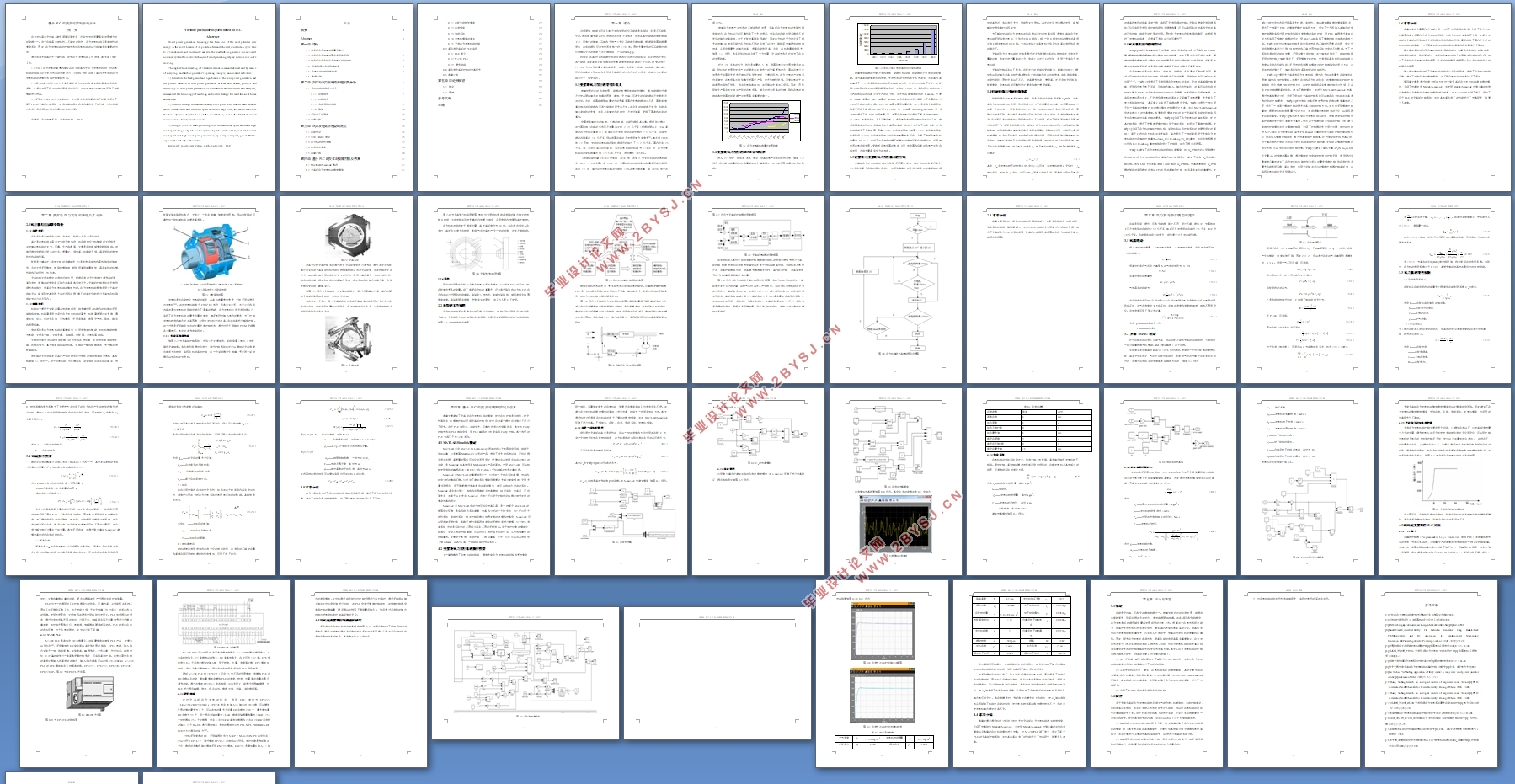基于PLC的变桨距控制系统设计
无需注册登录,支付后按照提示操作即可获取该资料.
基于PLC的变桨距控制系统设计(任务书,开题报告,外文翻译,论文说明书15000字)
摘 要
风力发电具有无污染、建设周期短等优点,已成为全世界最具有发展潜力的新能源之一。由于风能具有随机性、不确定的特性,风力发电机组又是非线性的复杂系统,因此,风力发电机组的控制技术对风电机组的运行起着至关重要的作用。
通过阅读大量国内外文献资料,研究风力发电机组工作原理,本文做了如下工作:
1)介绍了风力发电的背景和意义以及目前国内外风力发电的现状,对风电机组的组成及风力发电技术的原理进行了介绍和分析,总结了国内外先进的风力发电机组的建模技术和控制策略技术。
2)通过机理分析的方法对大型变桨距风力发电机组建立数学模型以及风速模型,此模型体现了风电机组的基本动态特性,并在Matlab/Simulink环境下搭建模型进行仿真。
3)采用S7-200PLC作为处理核心,针对额定风速和高风速下的情况设计了基于PLC的变桨距控制系统,并测试其在额定风速和高风速下的性能,对快速响应风速、提高系统的稳定性具有较好的效果。
关键词:风力发电系统;变桨距控制; PLC
Variable pitch control system based on PLC
Abstract
Wind power generation technology has been one of the most potential new energy in the world because of its pollution-free and shortest construction cycle. Due to it’s randomness and uncertainty and also the wind turbine generator is complicated nonlinear system the control technique of wind generating set play a crucial role in it’s working.
Through extensive reading of literatures data at home and abroad and by means of analyzing wind turbine generator’s operating principle, main content as follows:
1) Introduces the background and significance of the wind power generation and the present situation of wind power generation at home and abroad, principle and technology of wind power generation of wind turbine are introduced and analyzed, summarized the technology of modeling and control strategy for wind turbine at home and abroad.
2) Methods through the mechanism analysis of pitch wind turbine mathematical model is established and the wind speed model for large pitch, this model embodies the basic dynamic characteristics of the wind turbine, and in the Matlab/Simulink environment to build simulation model.
3) Using S7-200PLC as the processing core, the rated wind speed and under high wind speed design of pitch control system of pitch based on PLC, and test the rated wind speed and high wind speed performance, rapid response speed, good effect to improve the stability of the system.
Keywords: wind power system;pitch-controlled; PLC


目录
摘要 Ⅰ
Abstract Ⅱ
第一章 绪论 1
1.1变桨距风力发电的背景及意义 1
1.2变桨距风力发电的国内外研究现状 2
1.3定桨距与变桨距风力发电机组的控制 3
1.4 恒速恒频与变速恒频技术 3
1.5 风电机组控制策略综述 4
1.6 本章小结 6
第二章 变桨距风力发电的原理及其分析 7
2.1 风机机组组成部分简介 7
2.1.1 风轮组件 7
2.1.2 机舱组件 7
2.1.3 传动系统的构成 8
2.1.4 塔架 10
2.2系统的工作原理 10
2.3本章小结 14
第三章 风力发电数学模型的建立 15
3.1风能理论 15
3.2贝兹(Betz)理论 15
3.3风力机的特性系数 17
3.4风速数学模型 18
3.5本章小结 20
第四章 基于PLC的变桨距模糊控制及仿真 21
4.1 MATLAB/Simulink概述 21
4.2变桨距风力发电机的数学模型 21
4.2.1风轮气动转矩模型 22
4.2.2风速模型 23
4.2.3传动系统 24
4.2.4发电机模型的建立 25
4.2.5变速风力发电机组控制 27
4.3高风速变桨距的PLC实现 28
4.3.1 PLC简介 28
4.3.2 S7-200 PLC 28
4.3.3 硬件组成 29
4.4高风速变桨距控制的仿真研究 30
4.5本章小结 32
第五章 结论与展望 33
5.1 结论 33
5.2 展望 33
参考文献 34
致谢 36
